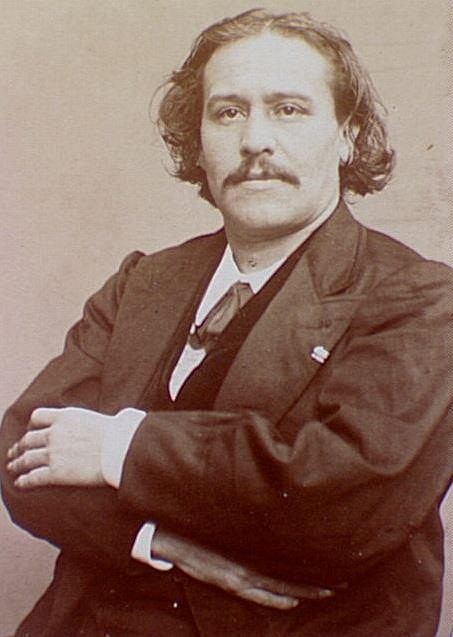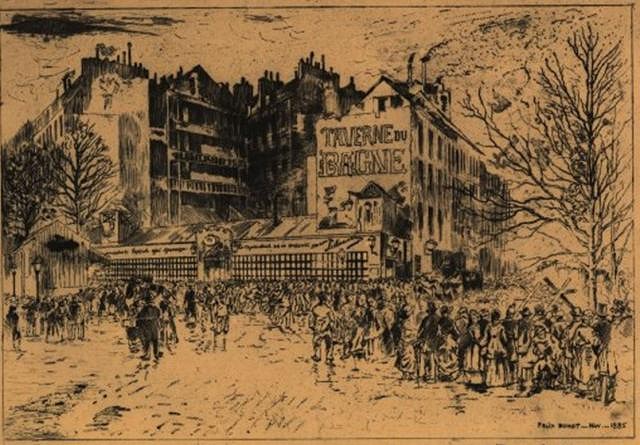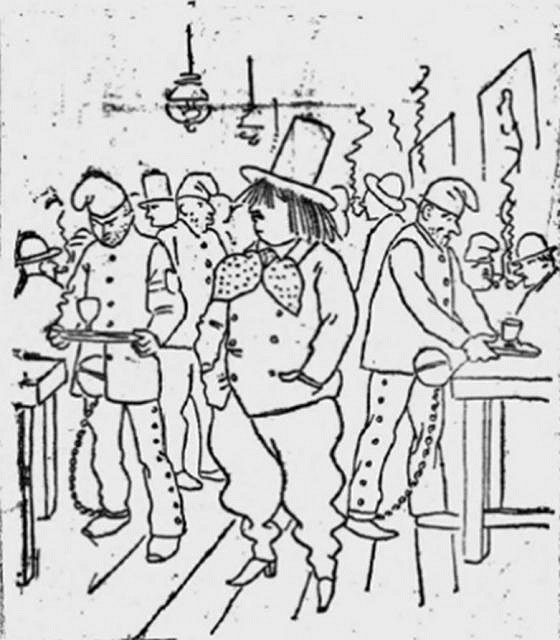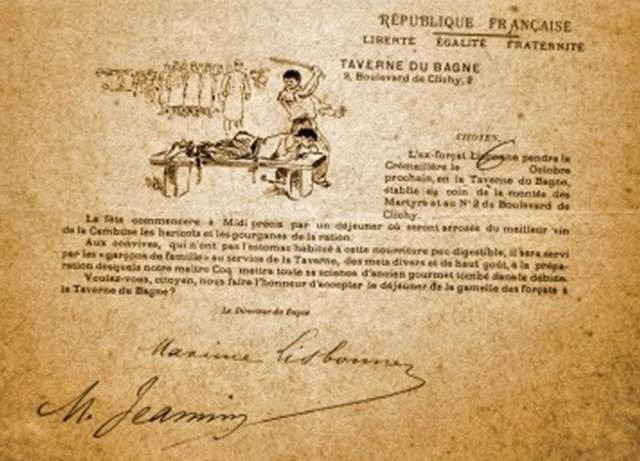Tiki Central / Tiki Travel / Club Nouméa's Parisian Tiki Tour
Post #756734 by Club Nouméa on Sun, Jan 3, 2016 2:08 AM
|
CN
Club Nouméa
Posted
posted
on
Sun, Jan 3, 2016 2:08 AM
The First Modern Theme Bar: Tropical Hell at the Taverne du Bagne
Meet the man who invented the modern South Seas theme bar: Maxime Lisbonne (1839 - 1905). Monsieur Lisbonne was a veteran of the Crimean War who, in the 1860s, became a theatre director in Paris. As a patriotic anarchist with a military background, he sided with the Parisian Communards at the end of the Franco-Prussian War of 1870 when France collapsed and the Versailles government negotiated a humiliating peace with the Prussians. For his actions as a Lieutenant-Colonel in the Garde Nationale during the defence of the Paris Commune, in 1871 he was tried and transported to the penal colony of New Caledonia, where he spent the rest of the 1870s, until a general amnesty allowed him and other Communards to return to Paris in 1880. Like various other Communards who had been exiled to penal servitude in New Caledonia, including the anarchist Louise Michel (known as "The Red Virgin"), his return was regarded with some trepidation by the authorities. Louise Michel, for example, was quite unrepentant upon her return and became a thorn in the side of the authorities, speaking out on all manner of social issues. Maxime Lisbonne however, initially returned to a quiet life in the theatre. At least, until 1885, when he came up with his own novel way of getting his own back at the Establishment:
La Taverne du Bagne (The Penitentiary Tavern), at 9 Boulevard de Clichy, on the corner where it meets the Rue des Martyres, is recognised as being the very first modern theme bar, a concept pioneered in Paris in the 1880s. M. Lisbonne drew on both his theatrical background and his experiences in New Caledonia to recreate his own little corner of tropical Hell in Paris. As he doubtless anticipated, the establishment became all the rage for members of the moneyed Parisian middle and upper classes, with queues of people waiting to get in. Each of the customers was greeted individually with a torrent of foul-mouthed abuse from a man dressed as a warder, telling them in no uncertain terms where to sit in the establishment, which offered food as well as drink, and cabaret performers, as well as fiery speeches from Louise Michel and other Communards from time to time. The waiters were decked out in prison garb and carried a ball and chain, although the ball, which they carried hooked over their belt, was hollow and contained a cloth they used to wipe down the tables. The crude rough-timbered interior, designed to replicate the atmosphere of New Caledonian penitentiaries like the Île Nou in Nouméa's harbour, was adorned with large images of various famous Communards and of the sufferings they had endured. M. Lisbonne himself often presided over the preceedings which, as a matter of course, included the ritual humiliation of his well-heeled customers:
Some advertising for the establishment:
As well as providing the conceptual basis for other such establishments in Paris, like the Café-Cabaret L'Enfer (with a trip to Hell being its theme), M. Lisbonne also pioneered the now-common practice of the "consommation obligatoire" (i.e. if you entered the establishment, you had to have at least one drink), presenting each of his customers with a little certificate once they had paid their bills: “RELEASE CERTIFICATE: The prisoner has consumed and was well-behaved. The Director, M. Lisbonne” Spurred on by the roaring financial success that the Taverne du Bagne experienced, M. Lisbonne went on to set up other theme bars and, at an exotic establishment he purchased called the Divan Japonais, presented the very first public strip-tease show in Paris in 1894. Toulouse-Lautrec was a customer there and immortalised the place in his works. So next time you are sitting in your local South Seas-style tiki bar, raise a glass to Maxime Lisbonne. He laid the conceptual groundwork that enabled the likes of Trader Vic's and Don the Beachcomber's to open their doors in the 1930s, although his twist on the South Seas theme was somewhat different from theirs.
[ Edited by: Club Nouméa 2016-01-03 02:20 ] |





